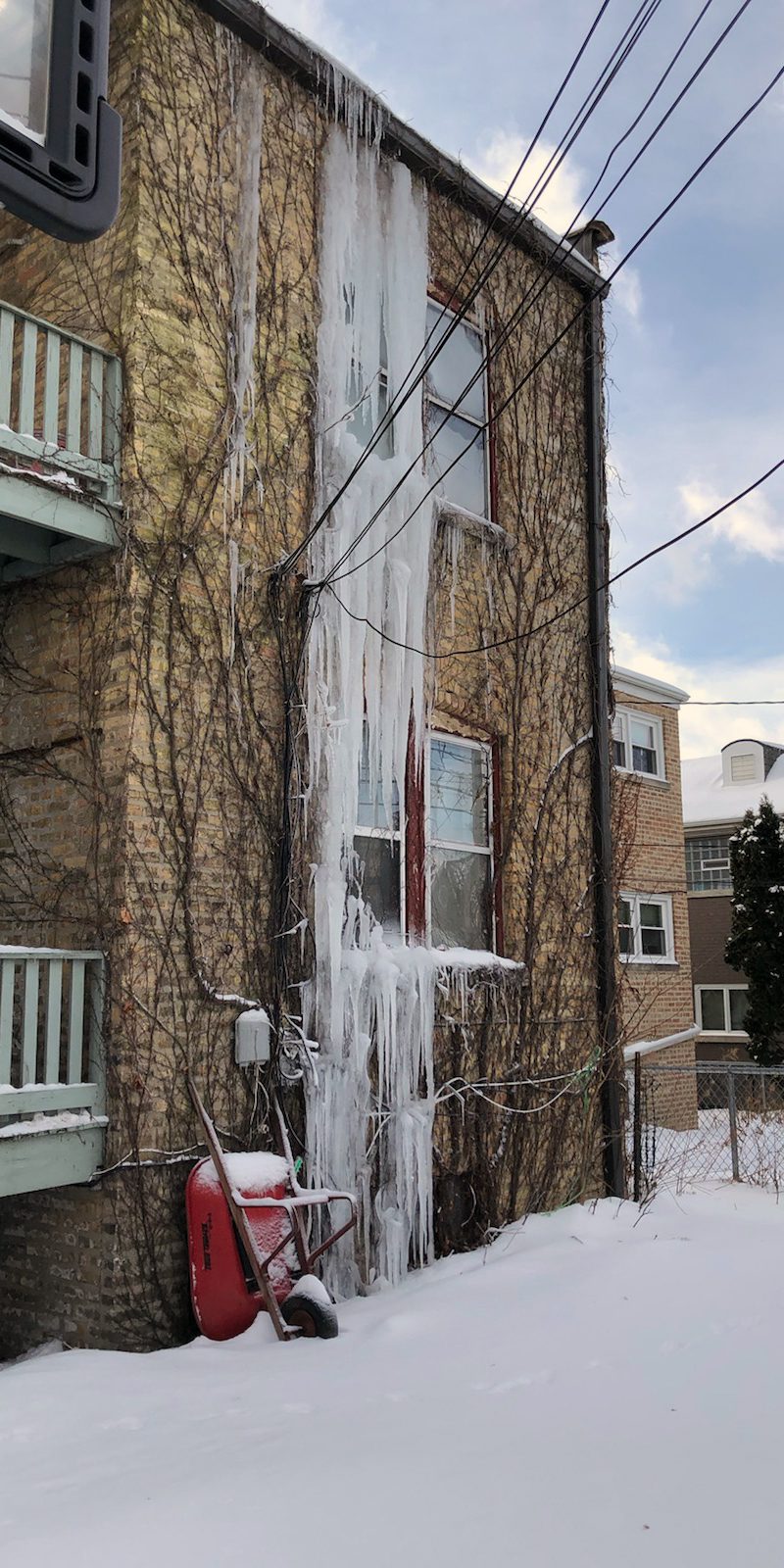How to Prevent Ice Dams
10 Tips on How to Prevent Ice Dams
– Guaranteed Gutters in Chicago
Here at Guaranteed Gutters, we know about How to Prevent Ice Dams. We are based out of Chicago, right in The Midwestern United States, the Midwest or the American Midwest. Needless to say, we have experienced our fair share of snow fall here in Chicago. After this 2020-2021 winter season, we took it in our own hands to share our knowledge on this topic. We hope this will help educate our community and even those in other snow covered cities. Lets get to it.

Here’s How
1. Regular Gutter Cleanings
Regular Gutter Cleanings must happen prior to the winter period. Debris within the gutter can lead to ice buildup in your gutters. Debris can prevent the flow of melting snow to your down spouts for proper drainage. Improper draining will cause the water to run over the lip of your gutters and create long icicles.
2. Gutter Guard Installation
Gutter Guards help to prevent ice dams by increasing the water flow rate within the gutters to the downspouts. Gutter Guards allow for you to manage your gutters easier and less Gutter Cleaning maintenance is required to do so. Learn more about the Gutter Guards we recommend and use HERE.
3. Heat Wire or Heat Trace Installation
De-icing cables are insulated electric heating wires specially designed for roof and gutter applications. These cables could be the most up-front and functional solution against ice build up. These cables radiate heat to defend against melting snow from refreezing before gets down to the gutter and drain safely.
4. Roof Ventilation
Vents allow cool air to enter and flow in the roof. It is essential that the warm air from heating your home in the winter does not get trapped within the roof during freezing temperatures. If so, the warm air will cause the snow to melt and instantly freeze near the edge of the roof. We recommend you contact your local roofing company and discuss what they’d suggest for your home regarding Ventilation of the eaves and the ridges.
5. Sealing the Roof Hatch
The goal here is to seal in any warm air that can escape from within the roof. If applicable, you’d also want to make sure that the seams of your whole-house fan are air tight as well. You’d want to make sure that the company you speak with uses a high-quality sealing product to stand against the snow.
6. Exhaust to the Outside
Typically, these exhaust are an outlet for air collected from various rooms in your home. In the winter, the air let out can be warm enough to melt the snow near the exhaust. You’d first want to airproof the exhaust’s seals and you may also want to consider asking a roofing company to give you advise on your current exhaust set up and whether there’s a better way to arrange the exhaust(s).
7. Add insulation
To prevent as much warm air from escaping into the roof/attic. Contact your preferred roofing company and find out how much insulation is needed to keep your attic cool enough so that the snow does not melt and freeze on the lip of the gutter. Each home is unique but this is an essential step to not overlook.
8. Flashing Around Chimney
Chimneys produce a massive amount of heat. The Chimney Flashing helps the heat to not escape from the base of the chimney or water to get in from there also. In the winter this helps prevent heat from melting the snow and freezing instantly near the roofline.
9. Seal and Insulate Ducts
Similar to sealing the exhausts. You want to make sure the ducts are sealed and properly insulated. The ducts are what allows the air to travel from a said room to the exhaust. If these are not sealed properly, in the winter this will cause the temperature in your attic to increase to above freezing. In turn the snow will meld and freeze instantly near the roof line.
10. Caulk All Penetrations
These are all the locations within the roof (on wall or floor) for the purpose of accommodating the passage of all mechanical, electrical or structural penetrant. You would want to hire a professional to inspect all these areas and seal any areas with the potential to let air escape or light escape from within you home. It is important to insure that a fire-stop sealant is used for this project.
Additional Solutions to Prevent Ice Dams
Rock Salt / Ice Melt
Rock Salt and Ice Melt lowers the freezing point of water so new ice takes longer to form. This allows water to run longer and end up where it needs to be. Here are a few ways you can apply and prevent ice build up with this product.
a. Ice melt salt placed onto roof and gutter areas.
b. Salt filled nylon sleeves installed along rooflines.
c. Ice melt with steam.

